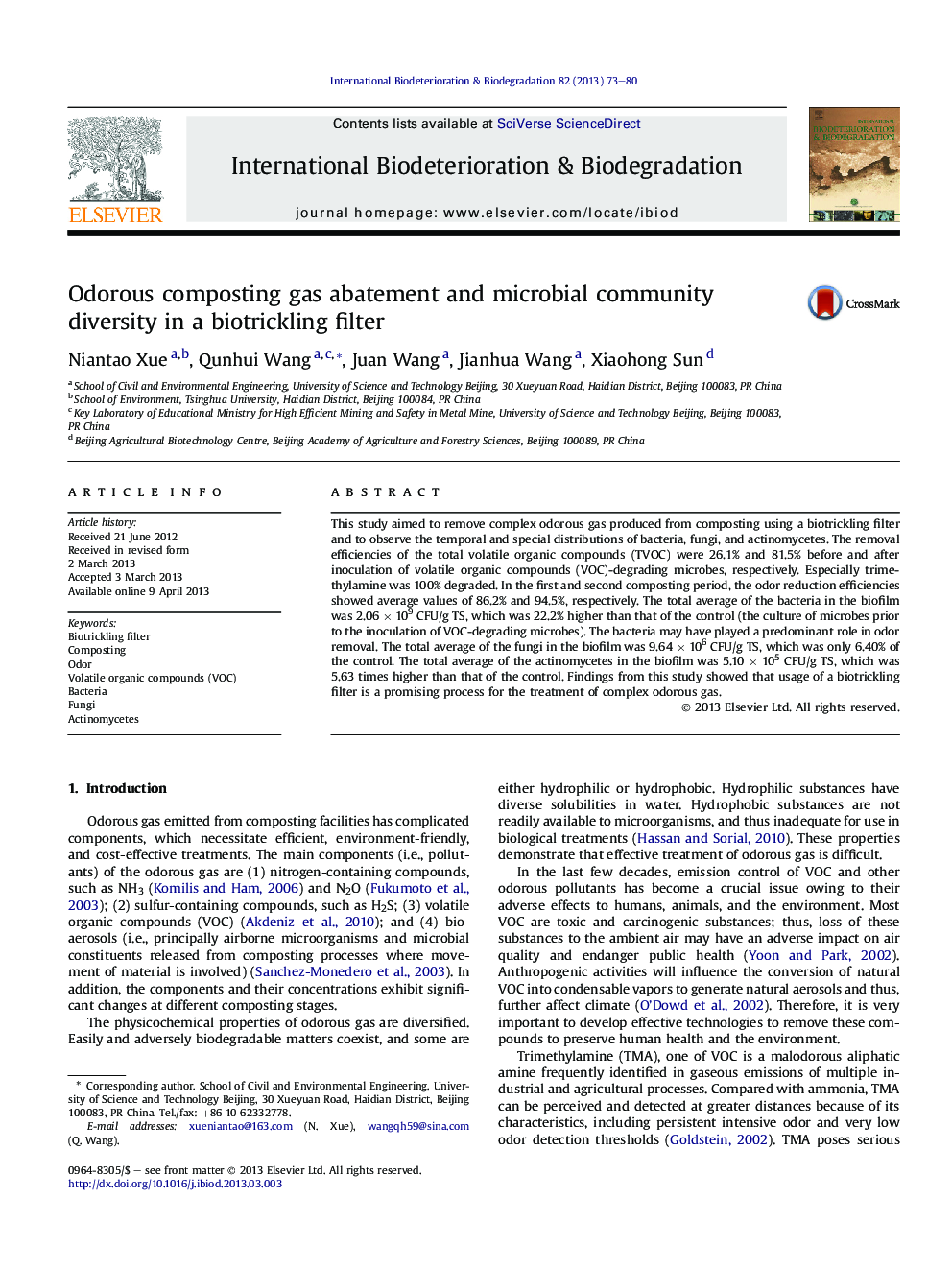| Article ID | Journal | Published Year | Pages | File Type |
|---|---|---|---|---|
| 4364968 | International Biodeterioration & Biodegradation | 2013 | 8 Pages |
•The odor reduction efficiencies could be more than 90%.•Total volatile organic compounds, trimethylamine, and NH3 were effectively removed.•Total average of bacteria was 2.06 × 109 CFU/g TS.•Bacteria may played a predominant role in odor removal.•Total fungal and actinomycetes averages were 9.64 × 106 and 5.10 × 105 CFU/g TS.
This study aimed to remove complex odorous gas produced from composting using a biotrickling filter and to observe the temporal and special distributions of bacteria, fungi, and actinomycetes. The removal efficiencies of the total volatile organic compounds (TVOC) were 26.1% and 81.5% before and after inoculation of volatile organic compounds (VOC)-degrading microbes, respectively. Especially trimethylamine was 100% degraded. In the first and second composting period, the odor reduction efficiencies showed average values of 86.2% and 94.5%, respectively. The total average of the bacteria in the biofilm was 2.06 × 109 CFU/g TS, which was 22.2% higher than that of the control (the culture of microbes prior to the inoculation of VOC-degrading microbes). The bacteria may have played a predominant role in odor removal. The total average of the fungi in the biofilm was 9.64 × 106 CFU/g TS, which was only 6.40% of the control. The total average of the actinomycetes in the biofilm was 5.10 × 105 CFU/g TS, which was 5.63 times higher than that of the control. Findings from this study showed that usage of a biotrickling filter is a promising process for the treatment of complex odorous gas.
